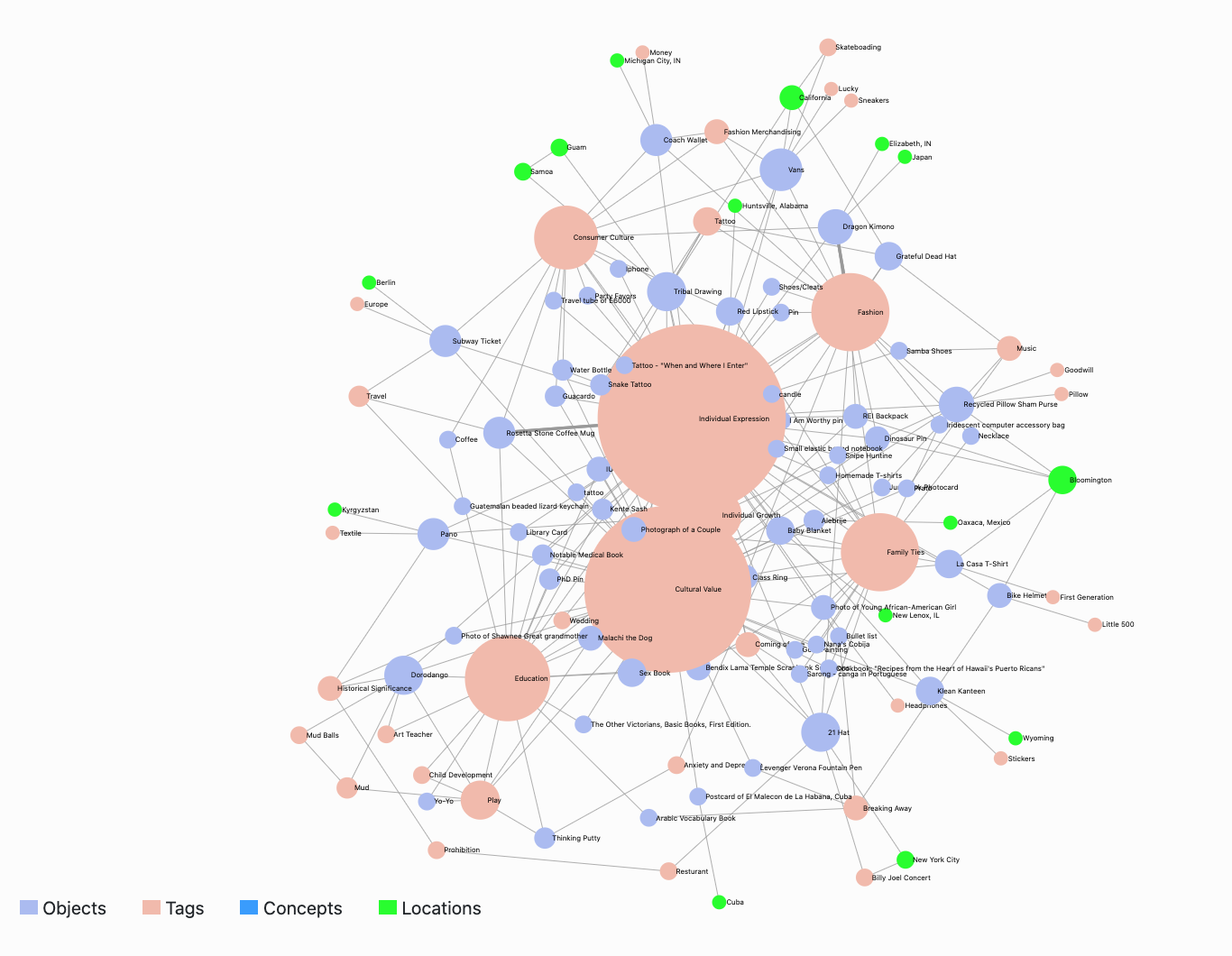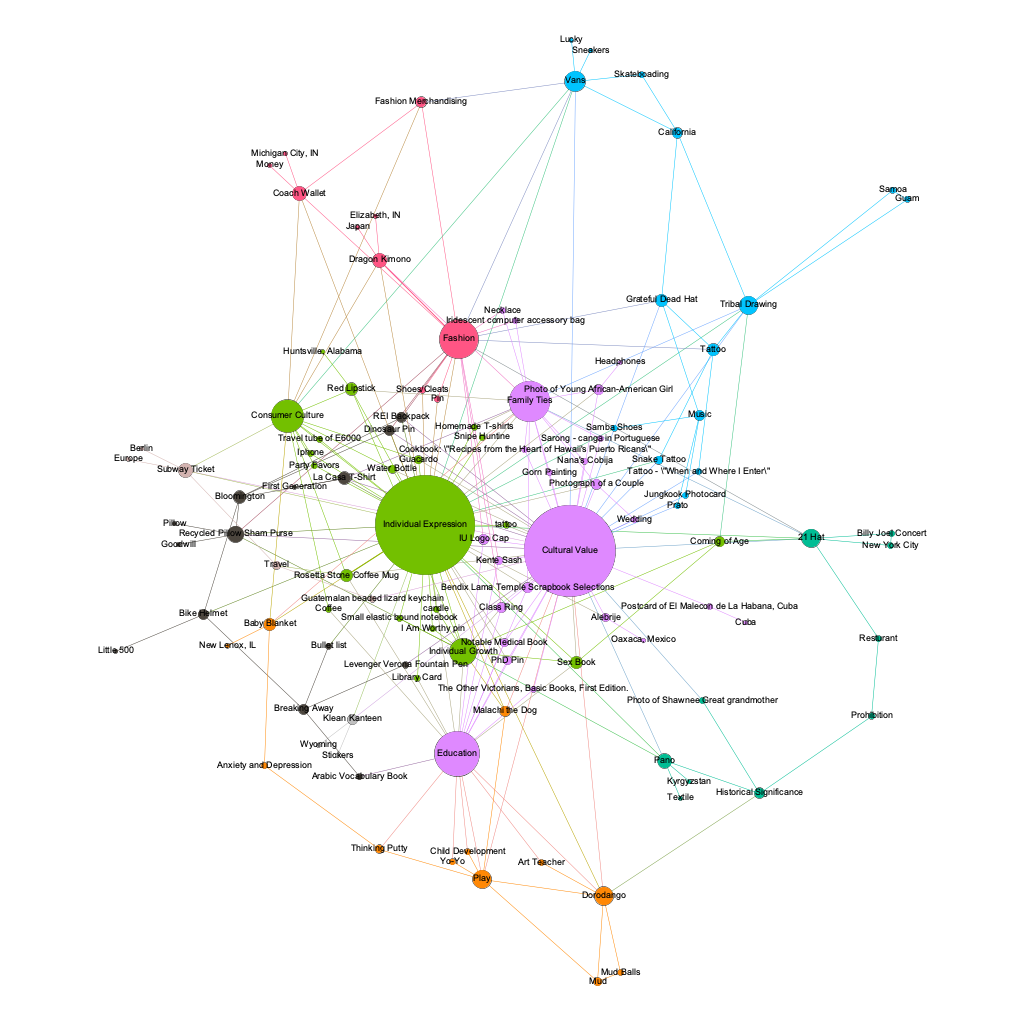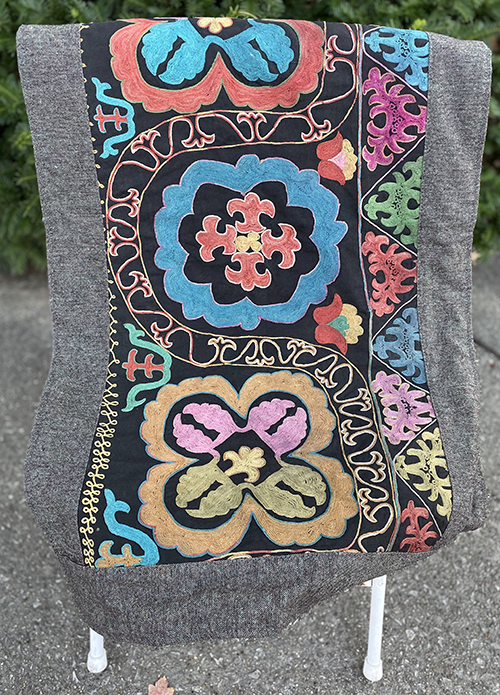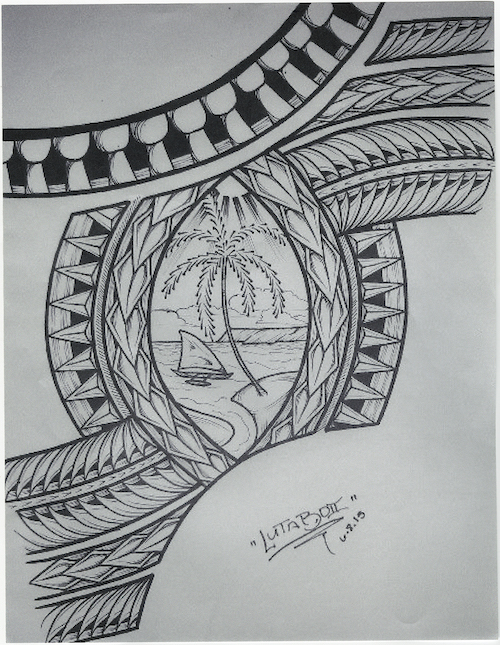Network analysis to understand the cultural values of self expression
Network analysis to understand the cultural values of self expression
How do the cultural differences of each object affect how they serve as a mode of individual self expression?
The Dorodango collection is a collection of mudballs that were collected by the object’s owner over the course of the past 25 years. He teaches the process of creating dorodango as an educational tool in his art classes to help his students learn how nature can be used to create art, to teach them patience, and as a means of relief and comfort. This collection relates to our research question because it is an educational tool, and through learning the student grows, and individual growth is a mode for individual expression. Additionally, because dorodango is used in education, this collection reflects the culture of education in the United States. Vans are an individual statement that J’Essence wants to include in her life on a daily basis. These shoes bring her some kind of luck she says whenever she wears them. She relates to how good her days usually are, and on that day when she brought them to the history harvest, she felt that her day was going very well. When looking at when she purchased the show, she felt that she had a connection to the shoe right from the store. These shoes are very vibrant with color and have many pops apart of them. I think they add something that some individuals may feel nervous about now-a-days, which is individual expression, especially when it comes that what they are wearing on a daily basis. J’Essence is a leader in this and really looks to keep her style going, whichever way she feels lucky. The Tribal Drawing that the owner plans on getting into a tattoo shows the cultural and historical value of the owners family and heritage through a form of individual self expression. It connects him to his Polynesian roots which is a big aspect of his life. Also, tattoos and other forms of body art are a big source of self expression because it lets you know more about a person through a visual cue.
Network analysis as a way of understanding your research question

We defined nodes as objects, locations, and tags, and our edges as “is connected to…” Of the information we had available, selecting these as our nodes and identifying the edges as “is connected to…” made the most sense organizationally. By doing this, we hoped that the connections between the objects and the tags would be clearly illustrated. Our method was for each group member to focus on one item at a time, create a node for that item, create nodes for tags and locations relating to that item, and then connect that item to those nodes. Once each member added all of the tags and locations for the object and connected them via edges, we moved on to the next object on the list.
From the secondary sources, we are finding more to add in our networking then we initially thought we would have. When thinking about it, it can be hard to correlate something to Vans or Mudballs. When thinking about it in the big picture however, we found that adding smaller items that can relate, would help us better understand how uncorrelated items even come together at times. The Vans that were chosen by one of our group members, was hard to connect with something. When looking deeper, we looked at how Candy Stripe pants tied into having that no name pattern like the Vans, but still having a stronger meaning. Even though they aren’t even similar on the same spectrum, we looked at how these two were similar in a way that could be tied together.
Explore our interactive network
So far, the network is completely centered around individual expression and cultural value. These two tags serve as the core between the items. As more items get entered, the core of these two tags grow and the pattern of individual expression through cultural value forms. We began to notice that all of the objects had individual significance and cultural significance through analyzing this pattern. Through our analysis of the degree of centrality of the nodes in our network analysis, where “Individual Expression” and “Cultural Value” anchor the network, it is clear that if something has cultural value, it most likely represents them as an individual too, because they are an individual a part of that community. Cultural context influences people’s perspectives, and how people view and understand things influences how they express themselves as an individual. However, after reading the descriptions of the edges connecting the objects to both of these nodes, we realized that all of the objects’ functions of individual expression and cultural value are different. Observing this phenomenon has helped us to better answer our research question; the connection between the culture represented by an item and how the item reflects one’s self-identity is two-fold. As evident by these trends, the big picture illustrated by the degree of centrality and betweenness of these two nodes shows the relationship between these tags with each other and the items. One the other hand, the smaller, more grassroots picture painted by the analysis of the items using the edges connecting the items to the tags illustrate the individuality of the cultures themselves and how those differences in culture identity and affiliation influence how someone identifies and expresses themselves.
In further analysis of the betweenness of centrality, we found that “education,” “family ties,” “fashion,” “individual growth,” and “consumer culture” are also significant tags. Because of their connections to the anchor nodes, “individual expression” and “cultural value,” and how they each connect to certain objects that share a connection with the anchor nodes but not the other significant tags, these tags would serve well as defining factions within the network. The labels of these tags do a good job describing the more grassroots and individualized significance of the items because the generalized labels of these tags serve to illustrate the umbrella groups that the objects connected to the tags would fall into. When dragging one of these significant tags, you can see what objects are affected by this tag, and thus would fall into that group.
However, where we see what the computer can do that we are unable to do is breakdown all of the nodes into factions, including the nodes that are between that we would have missed in our attempt of faction analysis above. It shows us that we have actually nine communities that are closely related. There are multiple colors that are connected to “cultural value” and “individual expression,” which shows how those tags affect and are affected by objects of different factions.

Some of the problems that we ended up running into were how are we going to add different nodes for some objects and what needed to go where. We added every single one of the objects, but it was tough at times figuring out ways to decide what went with what. When looking at each object, we looked at trying to add key words from the transcript. We also wanted to try to tie everything into individual expression, which could be hard at times if that object wasn’t expressing someone in certain ways. I think it was also hard to come up with some tags, but we tried to accommodate everything that was given to us.
A conclusion
Using network analysis to see how the cultural differences in the objects submitted serve as a mode of individual self expression showed the complexity of what seemed to be a simple connection. After running a faction analysis of our network that we created, the story became much clearer about the connections of these objects relating to individual expression and cultural value. Seeing how smaller nodes such as family ties and education were pulled more towards cultural value while individual expression was the largest node. We reached this by combining how we looked at our own objects and applying them to the network so the greater trends could be seen throughout all of the objects.
Featured artifacts in this exhibit: Network analysis to understand the cultural values of self expression
Van's Era Shoes
J’essence Reynolds


